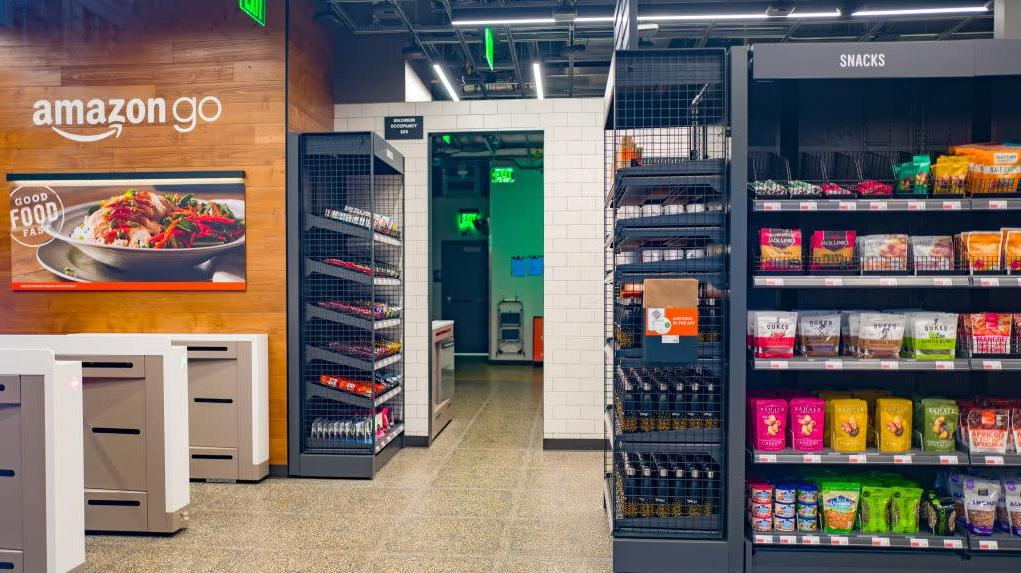Amazon Hurls Us Headlong Into The Future With New Palm-Scanning Payment Technology
Back in February, Amazon Go Grocery opened in Seattle's Capitol Hill neighborhood. It's a supermarket operated by futuristic technology that advocates for online privacy are none too ecstatic about. Here's how The Takeout described Amazon Go Grocery at the time:
You enter the grocery store, and scan a QR code from your Amazon app on a turnstile. Amazon then tracks you as you pick up groceries and put them in your cart... The 10,400 square foot store is about a quarter of the size of average supermarkets, but still carries everything a normal grocery does: produce, dairy, meats, beer and wine. Some of the products are provided by Whole Foods (which is owned by Amazon), though the tech giant insists Amazon Go Grocery is neither trying to compete with nor replace the national chain.
Seattle's Amazon Go Grocery is the largest location, but there are a total of 27 Amazon Go outlets nationwide, in Seattle, San Francisco, New York, and Chicago. (In fact, there appear to be seven locations in Chicago, and the notion that they've spent this long quietly operating without my knowledge is slightly chilling.) And now, The Verge reports, Amazon has unveiled new tech to pair with the already high-tech stores: Amazon One, a palm scanner that lets customers pay for purchases with a swipe of their hand.
This isn't fingerprint technology; it goes deeper than that. The Verge explains that a palm scan reads the configuration of veins under your skin and the shape of your hand itself, which is similar to the processes involved in facial recognition technology. A fingerprint can be lifted and copied, whereas a palm scan is much more intricate and therefore, the theory goes, more secure to use as a payment system.
"Although Amazon One will initially be used for payments only, it's clear the tech giant has much bigger ambitions for this hardware," notes James Vincent for The Verge. "Amazon One isn't a payment technology. It's an identity technology, and one that could give Amazon more reach into your life than ever before."
The article goes deep into Amazon One's technology, and one of the most insidious things about it is the ease of adoption. To sign up for Amazon One, you just need to pop a credit card into the scanner and offer up your palms for identification. The data derived from your palms will be stored in the cloud, which is definitely worth noting if you plan on signing up. Apple's Face ID also uses biometric data like facial scans and fingerprint identification to unlock your phone and pay for purchases, but that data isn't stored on the cloud—it's stored directly in the phone itself. When that data lives in the cloud, it's more vulnerable to hackers who might use it for far more nefarious purposes than picking up a gallon of milk at an Amazon Go Grocery.
Reuben Binns, a University of Oxford professor studying data protection, also offered his thoughts to The Verge on the tradeoffs of this supposedly convenient technology:
"The advantage is that it's on you all the time, this isn't something you can lose, but that's also a disadvantage because you can never change it. You can never change your palm like you change your password or other identification tokens."
If you're so worried about losing your passwords that you'd sign up to enter your biometric data in the cloud, may I instead suggest a password manager as a first resort?
